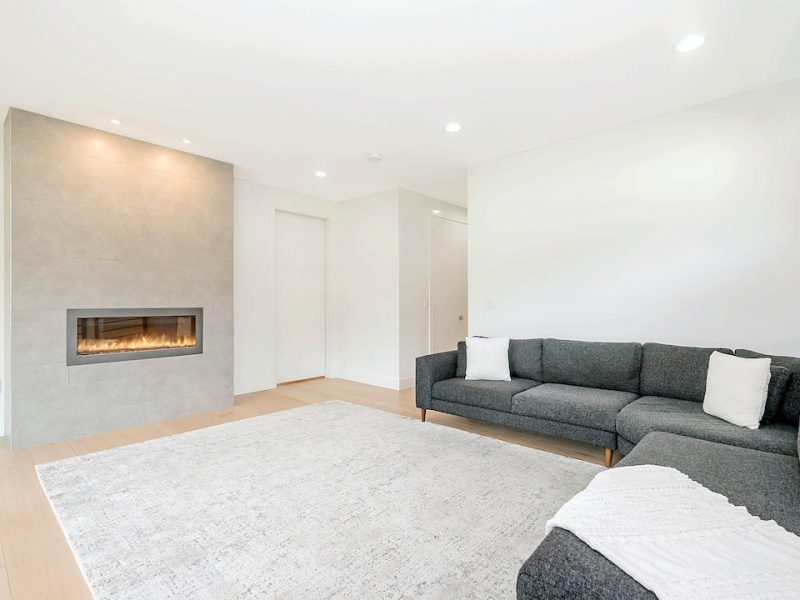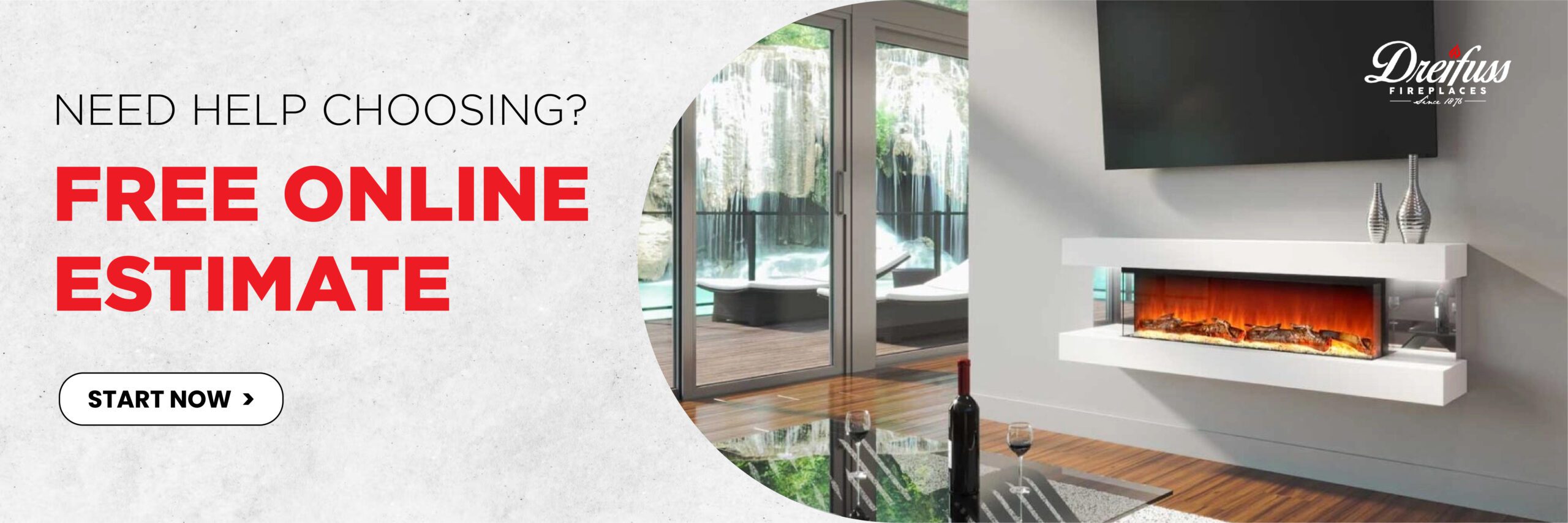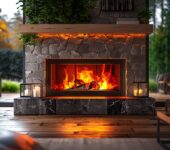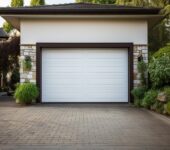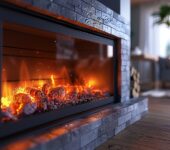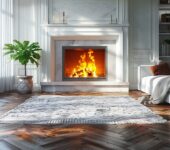Table of Contents
For many years, fireplaces were the main heat source in homes. While modern HVAC systems replaced them as a heat source, fireplaces are a symbol of the home to this day. As a result, fireplaces are often prominent in residential design. Just as they evolved in their use, fireplace design evolved over the years. There are now many different types of fireplaces on the market, including a perennial favorite, linear fireplaces.
If you’re looking to add a linear fireplace to your home, keep reading to learn what you need to know before buying.
1. Fuel Type
There are two main fuel types for linear fireplaces – gas and electric. A linear gas fireplace uses either natural gas or propane for fuel. Natural gas is more common in urban and suburban areas, whereas propane is more common in rural areas.
Natural gas is a safer fuel type than propane because it’s lighter than air and dissipates quickly. This reduces the risk of ignition if there is a gas leak. But, propane has a better heat output compared to natural gas.
A linear electric fireplace operates on electricity only, so it doesn’t need to be connected to a fireplace gas line. Electric fireplaces have a low heat output, so you can use them year-round.
2. Vent Type
The vent type for a linear fireplace depends on the fuel used. A linear gas fireplace will often use a direct vent. The combustion gas is removed from your home through a wall-mounted vent.
There are also linear gas fireplaces that are vent-free. They are easy to install since they don’t need any vent pipes. But, since gases are vented into the home, you can’t run these types of fireplaces for long periods of time.
A linear electric fireplace is also vent-free. Since it doesn’t give off any gas emissions, there is no need for venting.
3. Cost
On average, the cost to install a fireplace is about $2,314. Average costs range from around $870 to $3,792. The type of fireplace as well as any ventilation or wiring needs, will affect the cost.
Both gas and electric fireplaces are available in a range of price points, but electric fireplaces tend to be cheaper. When you factor in installation costs, electric fireplaces still come out ahead because there is less labor involved. In some cases, electric fireplaces don’t need professional installation.
Another thing to consider is the cost of burning different types of fuel. The cost of natural gas is about two to three times lower than the cost of electricity. So, a linear gas fireplace will cost more to install, but a linear electric fireplace will cost more to run.
4. Size
Linear fireplaces come in various sizes, but they are almost always much longer than they are tall. The typical width of a linear fireplace is about 3 feet to 6 feet, and the typical height is about 12 inches to 18 inches.
For custom sizing, it’s recommended that a linear fireplace is three to four times wider than it is tall. So if the fireplace is 8 feet wide, then it should be about 2 feet tall.
5. Installation
As we’ve already discussed, the cost to install a fireplace can be expensive so some people might want to install the fireplace themselves. While it’s possible to install both gas and electric fireplaces on your own, it’s often worth it to hire a professional.
When installing a linear gas fireplace, you will need to hire a professional to add or move a gas line. This will reduce the risk of gases leaking into your house and creating a fire hazard. Also, if you need any ventilation added, it’s best to have this done by a professional.
It’s much easier to install a linear electric fireplace on your own. If you have a plug-in model, there’s no need for professional installation as long as you’re confident you can mount the fireplace properly. But, if you need any wiring done, it’s best to bring in a professional.
6. Maintenance
Both gas and electric linear fireplaces are easy to maintain. Unlike wood-burning fireplaces, gas and electric fireplaces don’t need regular cleaning.
A linear gas fireplace should be inspected every year. If you have a direct vent gas fireplace, remove and clean the glass for the best viewing experience. Remove any dust from the interior and clean the pilot light with compressed air.
It’s also recommended that a linear electric fireplace be inspected every year. This will make sure the electric components are in proper working order. Remove any dust from the air intake.
7. Linear Fireplace Ideas
Due to the sleek, rectangular shape, linear fireplaces are thought of as modern or contemporary style fireplaces. Whether you’re building a new house or going through a remodel, it can be difficult to decide whether a linear fireplace is the right style for your home. Don’t worry; we have plenty of linear fireplace ideas that will make your home look amazing!
If you want a contemporary look in your home, consider using materials such as tile, concrete, or metal on the wall around the fireplace opening. Make the opening flush with the wall for a sleek, streamlined look.
If ultra-modern is not your style, consider adding traditional stone around your linear fireplace. Adding a mantel can also help strike a balance and create a beautiful transitional space.
It’s important to take the architecture of your home into consideration when choosing a fireplace, but don’t let it back you into a corner. Fireplaces are focal points in the home, so you should choose one that you love and that makes you happy.
Buying a Linear Fireplace
As you can see, there are many things to consider when buying a linear fireplace. At the end of the day, you should choose what works best for your budget and your lifestyle.
Ready to move forward with buying a linear fireplace? Contact us today to tell us about your needs and learn more about our products.
Latest Articles

Glass Door Garage: Elegance With Every View
Table of Contents1 What Is a Glass Door Garage?2 What Are the Benefits of a Glass Door Garage?3 What Are the Different Types of Glass

What Is Cleanburn?
Table of Contents1 What Is Cleanburn?2 How Does Cleanburn Work?3 What Are the Benefits of Cleanburn?4 What Types of Appliances Use Cleanburn Technology?5 How to
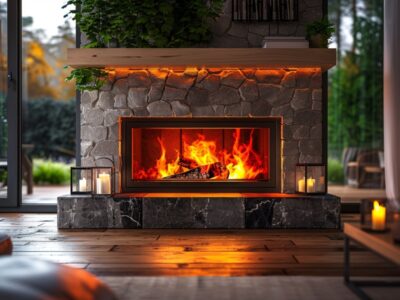
How Long Does It Take To Install A Fireplace?
Table of Contents1 Factors That Affect Installation Time2 How Long Does It Typically Take to Install a Fireplace?3 Factors That Can Extend Installation Time4 What



